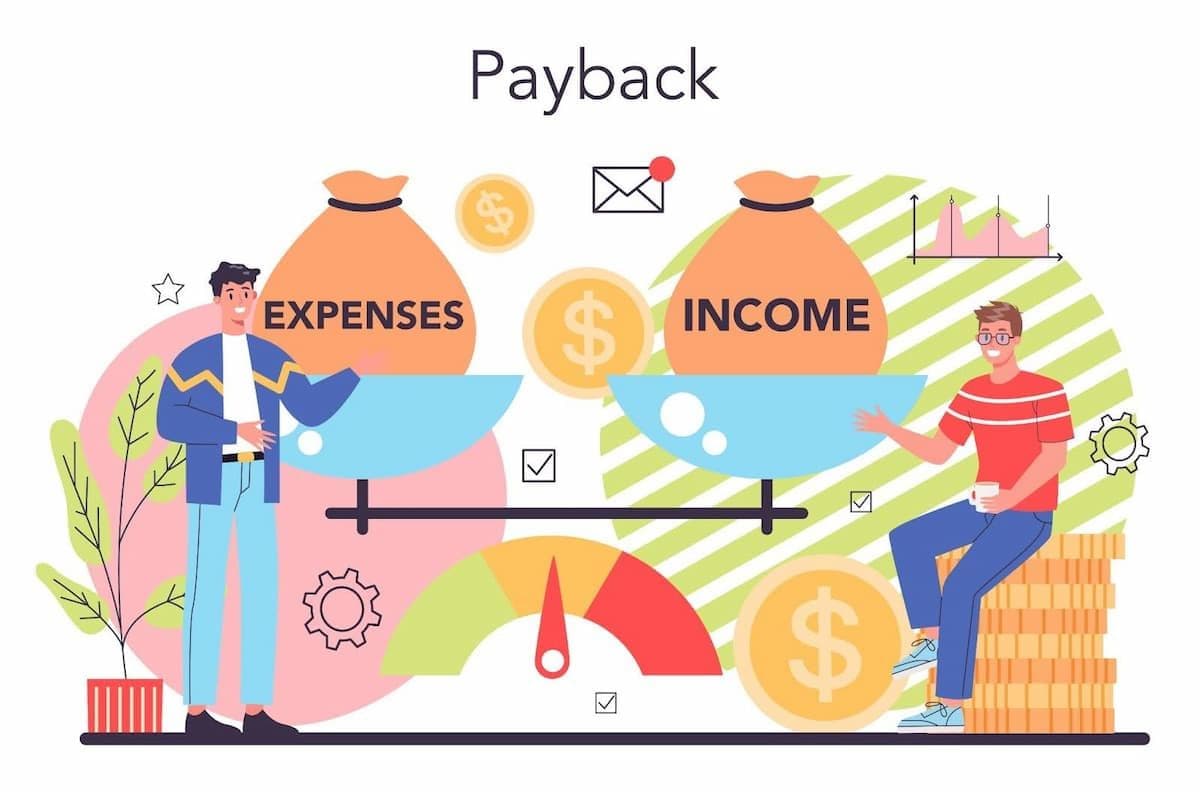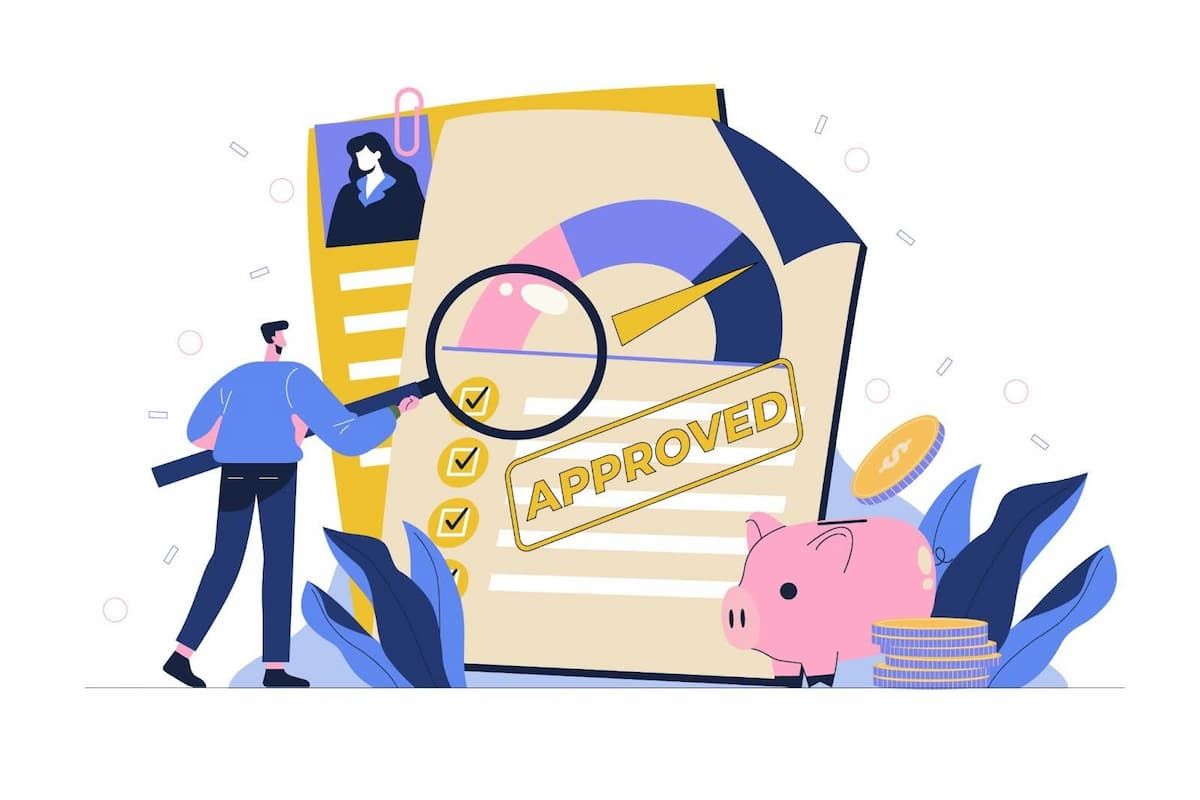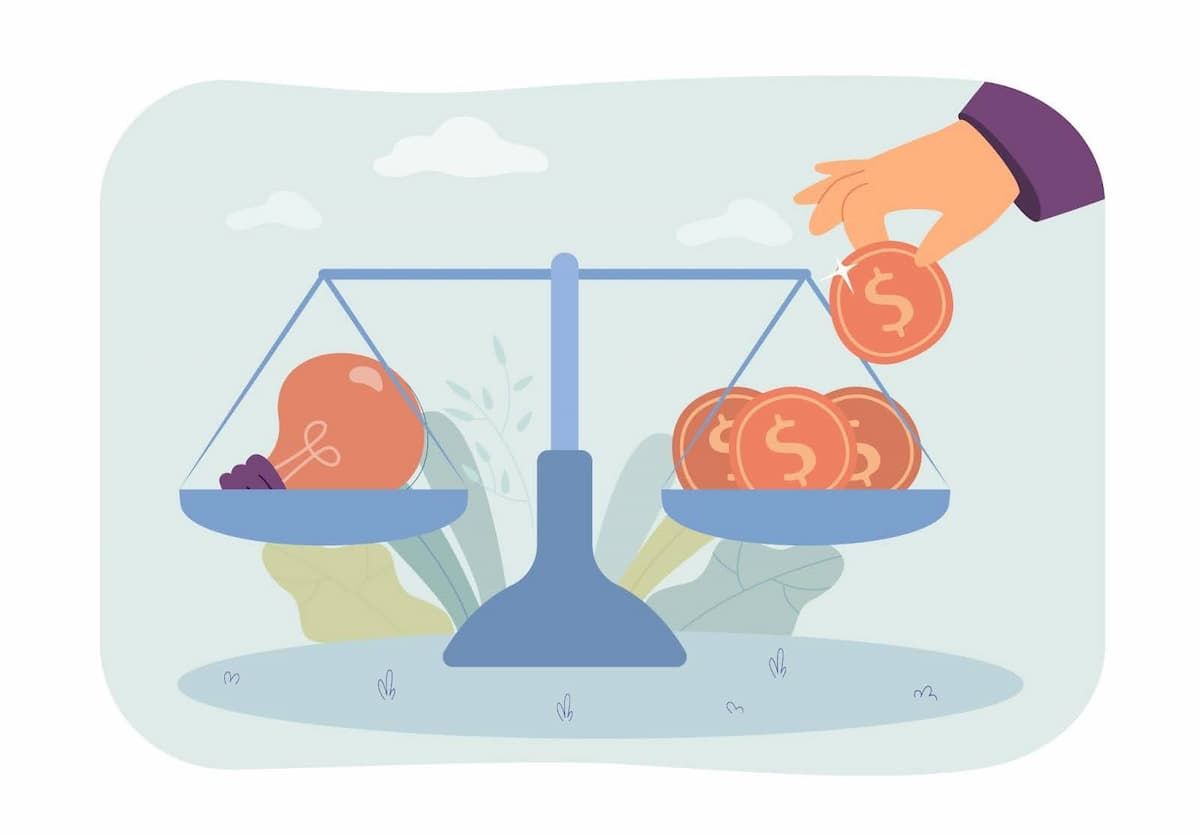Debt-Service Coverage Ratio (DSCR)
Debt-Service Coverage Ratio (DSCR): Understand, Calculate, Improve

Every business faces financial storms at some point. The debt service coverage ratio (DSCR) can help you determine whether you can maintain your course when the storms strike, as long as your income is sufficient. It reflects whether your income will be enough to cover debt payments with ease or not, or whether your cash flow will be stretched.
Knowing how to read DSCR and turn it into actionable insights will give you a more qualified outlook on your business. It helps you make better financial decisions. It also provides you with the means to secure additional financing and develop a long-term strategy.
What Is Debt-Service Coverage Ratio (DSCR)?
What is DSCR? It’s a measure that compares your business’s net operating income to the total amount you owe in debt payments. In simple terms, the DSCR's meaning indicates whether your business generates sufficient earnings to cover its debt payments.
A DSCR above 1 means you can pay your debts and still have income left over. A DSCR below 1 means your business isn’t generating enough to meet its obligations comfortably.
You can also think of DSCR as your cash flow-to-debt ratio. It’s a snapshot of breathing room, how much cushion your business has between income and expenses.
Formula:
DSCR = Net Operating Income ÷ Total Debt Service
A ratio of 1.25 means you have 25% more income than needed to pay off your debts. If your DSCR is 0.9, you’re short by 10%, meaning debt payments exceed your income.
Why DSCR Matters for Businesses and Lenders

DSCR helps lenders assess your ability to meet debt obligations - Freepik
The DSCR matters because it shows how confidently a business can handle its debt. For lenders, it’s a sign of stability and trust. For owners, it’s a way to measure how much room you really have before debt starts to feel heavy.
For Lenders: Risk Assessment
When lenders assess the DSCR meaning in a loan application, they’re looking beyond the number itself. They analyze your ability to manage total debt service, both principal and interest, to determine how consistently your business can meet its financial obligations. A higher DSCR indicates lower risk and stronger repayment capacity.
Most commercial lenders require a ratio of at least 1.25 to 1.50 between loan content and margin account. Anything below that number can be considered risky by them, which can lead to an increase in interest rates or other more stringent conditions.
In addition to the existing number of lenders, several lenders are interested in the financial reporting DSCR and prefer to observe trends across their history. A steadily increasing DSCR suggests better management and a secure income stream, while a downward trend can indicate a review or restriction of lending.
For Business Owners: Financial Health Indicator
For entrepreneurs, DSCR is like checking your business’s pulse. It tells you if your income is sufficient to cover debts without depleting your cash reserves. The higher your DSCR, the healthier your cash flow and confidence.
When your ratio is low, you may be required to increase your profits, control costs, or alter the terms of various loans. A DSCR of over 1.25 is a good measure, indicating that your operations are both low and strong, allowing for expansion while also withstanding slow months.
How to Calculate DSCR Step by Step
Learning how to calculate DSCR gives you control over your business’s financial health. It helps you see how your earnings compare to your debt and shows where even minor adjustments can make a significant difference.
To apply the formula for debt service coverage ratio, you will need two numbers: your net operating income and the total annual loan payment.
Be careful to do it as follows:
- Calculate your Net Operating Income (NOI) - total revenue/operating expenses before interest and taxes.
- Divide by your Total Debt Service - the number of times by loans and credit lines rights.
- Apply the formula: DSCR = NOI/ Total Debt Service.
DSCR Formula Explained
To calculate your DSCR formula, divide your net operating income by your total debt payments.
For example, assuming your net operating income is $300,000 and you have $200,000 in debt payments, your total DSCR is 1.5. It implies that your business can generate 50 percent or more than the necessary sum to cover the debt commitments of your business.
A DSCR close to 1.0 means you can meet your debt payments, but there is no cushion for unexpected expenses.
Example of DSCR Calculation
Let’s compare two businesses to see how the debt service coverage ratio calculation affects financial outlook and lending decisions.
| Business | Net Operating Income (NOI) | Total Debt Service | DSCR | Interpretation |
|---|---|---|---|---|
| A | $250,000 | $200,000 | 1.25 | Strong position. Generates 25% more income than needed to cover debts, meeting typical lender standards. |
| B | $180,000 | $200,000 | 0.9 | Weak position. Cash flow falls short of obligations, increasing risk during periods of low revenue. |
Small changes in net operating income can shift your business from stable to high-risk in a lender’s view.
What to Include in Net Operating Income (NOI)
Your net operating income should include:
- Operating revenue: This is the income received as a result of the main activity of your business, i.e., sales or service charges. This is not a profit realized from the sale of assets or a one-time transaction.
- Rental or recurring revenue: Includes all predictable sources of revenue, such as long-term leases and subscription-based services, through which scheduled cash flows are assured.
- Routine expenses of conducting your business: Including routine values like salaries, lease, utility bills, and materials needed to ensure the day-to-day running of your business.
Avoid including one-time gains, tax benefits, or interest income, as these figures don’t provide an accurate picture of ongoing business performance and can distort the debt service coverage ratio calculation.
What Is a Good DSCR Ratio?

A healthy DSCR ratio ensures financial stability - Freepik
Knowing what a good DSCR is helps you understand both what lenders expect and where your business stands financially.
| DSCR Value | Meaning | Interpretation | Impact on Financing |
|---|---|---|---|
| Below 1.0 | Weak | Income doesn’t fully cover debt. | Often rejected by lenders. |
| 1.0-1.25 | Acceptable | Covers debt but has a minimal margin. | May qualify, but with conditions. |
| 1.25-1.5 | Good | Stable coverage, low risk. | Favors approval and better terms. |
| Above 1.5 | Excellent | Strong repayment ability. | Highly attractive to lenders. |
Generally, lenders consider a debt service coverage ratio of 1.25 or higher to be a strong indicator. For more volatile industries, they may expect higher ratios to offset income fluctuations.
Low DSCR? Here's What You Can Do
A low DSCR isn’t a failure. It’s a sign to take action before your financing options shrink. Understanding the DSCR definition helps you take early, practical steps to improve cash flow and rebuild a stronger financial position.
If your DSCR is below 1, you should demonstrate your ability to handle additional debt through an effective strategy and forecasting. The key lies in better cash flow management.
Practical ways to improve DSCR include:
- Increase revenue by refining pricing or focusing on higher-margin services.
- Reduce unnecessary expenses while maintaining your core operations' strength.
- Renegotiate loan terms to reduce monthly payments or extend the timeline.
- Adjust your payment schedule for bills to better align with your incoming cash flow and reduce shortfall risks.
Businesses that actively monitor and respond to low DSCRs often rebuild lender confidence faster than those that wait.
DSCR vs. Other Financial Ratios
The debt service coverage ratio focuses strictly on cash flow sufficiency. While metrics like the current ratio or quick ratio look at liquidity, and interest coverage ratios examine profit relative to interest, DSCR directly connects operating income to debt obligations.
That makes it one of the most practical tools for assessing real repayment ability. DSCR cuts through accounting figures and focuses on whether there’s enough money in motion to keep the business solvent.
Forecasting Your DSCR with Cash Flow Software

Forecasting DSCR helps you make smarter financial decisions - Freepik
Forecasting your DSCR lets you see the road ahead. You can predict how shifts in revenue or expenses might affect your ability to cover debt, long before they become problems. By using cash flow forecasting tools, you can simulate future income, fees, and debt payments under different conditions using your debt service coverage ratio formula as the foundation.
Financial planning is clarified by forecasting. It reveals the timings of debt requirements that could put the cash flow under strain, and where cost-cutting or postponing payment can be used to ensure the DSCR remains constant. Trustworthy DSCR software tools convert these perceptions into factual data, allowing you to take action, not just investigate the data.
Strengthen your cash flow visibility with real-time projections.
Explore cash flow forecastingCommon Mistakes When Calculating DSCR
Errors in getting your debt service coverage ratio formula can paint an inaccurate financial portrait. With updated numbers, you will achieve precise outcomes and establish trustworthiness among lenders.
Frequent mistakes include:
- Using outdated income data or skipping recent expenses.
- Forgetting to include principal repayments in total debt service.
- Including irregular or one-time income in your NOI calculation can inflate the ratio and give a false sense of financial strength.
- Ignoring taxes or seasonal variations.
When in doubt, keep calculations simple and based on verified financial records. A correct understanding of your DSCR definition starts with using accurate, up-to-date financial data.
Improving DSCR Over Time: Best Practices
Strong DSCR results from consistency. Once you understand your DSCR formula, you can make informed decisions to gradually improve it.
Focus on three long-term priorities:
- Grow a reliable income
Address recurring earnings, such as long-term contracting or subscriptions. Anticipated revenues help mitigate fluctuations in revenues.
- Keep expenses under control
Audit operations quarterly. Renegotiating supplier contracts and eliminating inefficiencies. A 5% reduction in costs is preferable to a 5% increase in revenues, as it raises the DSCR, because changes in costs are directly proportional to the net operating income.
- Optimize financing
Refinancing loans when interest rates drop increases your net income margin and raises your DSCR sustainably.
Make DSCR monitoring a regular part of your monthly financial review, rather than a one-time fix. Businesses that make it part of monthly reporting stay more resilient and credit-ready.
Gain real-time insights into cash flow and debt.
Start forecasting nowIndustry-Specific DSCR Standards

DSCR standards vary by industry for tailored financial health - Freepik
Different sectors have unique risk levels, which means that debt service coverage ratio expectations vary accordingly.
| Industry | Typical DSCR Benchmark | Interpretation | Impact on Lending |
|---|---|---|---|
| Real Estate | 1.25-1.40 | Stable cash flow from leases. | Required by most mortgage lenders. |
| Manufacturing | 1.30+ | High fixed costs, needs stronger coverage. | Improves equipment financing approval. |
| Retail | 1.20-1.25 | Seasonal cash flow accepted. | Lenders allow slightly lower ratios. |
| Services | 1.20-1.30 | Moderate consistency expected. | Easier to negotiate flexible terms. |
Knowing your DSCR benchmark helps you speak the same language as lenders and plan future borrowing confidently.
Tools to Track and Monitor DSCR Easily
Consistently monitoring your DSCR is crucial for maintaining predictable financing and lender confidence. With cash flow software, you can view automatic DSCR updates based on real transactions. It tracks how each payment and expense affects your debt service coverage ratio, enabling you to make informed decisions that protect liquidity.
Predictive trends and seasonal compensation scenarios can be compared using visual dashboards and scenario tools on a monthly basis. You can now access instant insights, eliminating the need for manual calculations and making financial management faster and more precise.
Here’s how different tools compare in tracking and monitoring:
- QuickBooks: Ideal for basic accounting, as it lacks detailed DSCR analysis and forecasting capabilities.
- Xero: All business-wise powerful in financial tracking, lacks a designation of DSCR monitoring.
- Excel/Spreadsheets: Flexible and expensive in terms of time, and error-driven when dealing with extensive data.
- Cash Flow Frog: Has dedicated up-to-date DSCR tracking in real-time, and utilizes visual aids to observe trends and modify this rotation easily.
Monitor your coverage ratio effortlessly and forecast cash trends in one place.
Sign upFinal Thoughts
Understanding your debt service coverage ratio (DSCR) can change how you view your business finances. It shows you whether your earnings are sufficient to handle debt comfortably and highlights areas that need attention before problems arise. A clear debt service coverage ratio definition turns complex loan figures into a picture of stability and control.
Once you know your DSCR and track it regularly, you’ll stop guessing about your financial health and start leading with confidence. Monitoring performance with cash flow software and adhering to consistent best practices helps maintain lender trust, providing you with peace of mind knowing your business operates on a solid financial footing.
Related Terms
FAQ
Looking for more help?
Visit our help center to find answers to your questions about CashFlowFrog.
Trusted by thousands of business owners
Start Free Trial Now